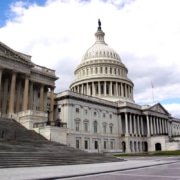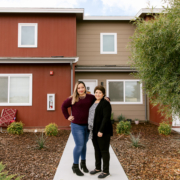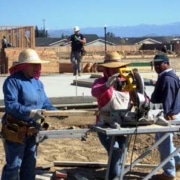Feb. 10, 2020 – Housing aid and other safety net programs are again targeted for reduction in the Trump Administration’s budget for fiscal year 2021, which begins October 1, 2020. The budget request, released today, is the first step in the annual appropriations process.
For the third year in a row, the Administration proposes to eliminate most USDA rural housing programs and many HUD programs – though there are not quite as many zeroes this year as in the past. Also for the third year in a row, Congress is expected to develop its own funding proposals. As the tables below indicate, Congress has not been inclined to accept cuts to housing aid.
To follow the funding process as it develops, sign up for the biweekly HAC News newsletter.
USDA
The FY21 budget departs from this Administration’s previous proposals in recognizing a need for repair and preservation of existing properties, both rental and owner-occupied. It proposes to fund the Multifamily Rental Preservation demonstration (MPR) at $40 million, considerably higher than the $28 million appropriated for FY20, and much needed because late in 2019 USDA had a backlog of MPR commitments amounting to around $70 million. It also suggests level funding of $30 million for Section 504 repair grants for very low-income elderly homeowners (but nothing for Section 504 loans) and $10 million for Section 533 Housing Preservation Grants, which can be used for either rental or owner-occupied homes. The budget narrative does not explain this apparent shift in approach.
Like this Administration’s past budgets, this one would charge tenants in Section 515 or Section 514/516 rentals a minimum of $50 per month. The budget also proposes to delete language that was adopted in the final FY20 funding agreement and allows renewals of Section 521 Rental Assistance contracts for 20 years, subject to annual appropriations.
USDA Rural Development Appropriations[tdborder][/tdborder]
USDA Rural Dev. Prog.
(dollars in millions) |
FY19 Admin. Budget |
FY19 Final Approp. |
FY20 Admin. Budget |
FY20 Final Approp. |
FY21 Admin. Budget |
502 Single Fam. Direct
Self-Help setaside* |
0
0 |
$1,000
5* |
0
0 |
$1,000
5* |
0
0 |
| 502 Single Family Guar. |
24,000 |
24,000 |
24,000 |
24,000 |
24,000 |
| 504 VLI Repair Loans |
0 |
28 |
0 |
28 |
0 |
| 504 VLI Repair Grants |
0 |
30 |
0 |
30 |
30 |
| 515 Rental Hsg. Direct Lns. |
0 |
40 |
0 |
40 |
0 |
| 514 Farm Labor Hsg. Lns. |
0 |
27.5 |
0 |
28 |
0 |
| 516 Farm Labor Hsg. Grts. |
0 |
10 |
0 |
10 |
0 |
| 521 Rental Assistance |
1,331.4 |
1,331.4 |
1,335** |
1,375 |
1,410** |
| 523 Self-Help TA |
0 |
30 |
0 |
31 |
0 |
| 533 Hsg. Prsrv. Grants |
0 |
15 |
0 |
15 |
15 |
| 538 Rental Hsg. Guar. |
250 |
230 |
250 |
230 |
230 |
| Rental Prsrv. Demo. (MPR) |
0 |
24.5 |
0 |
28 |
40 |
| 542 Rural Hsg. Vouchers |
20 |
27 |
32** |
32 |
40** |
| Rural Cmnty. Dev’t Init. |
0 |
6 |
0 |
6 |
0 |
| Rental Prsrv. TA |
0 |
1 |
0 |
1 |
0 |
* For the self-help setaside in Section 502 direct, the figures in the table represent budget authority, not program levels.
** The budget would move vouchers into the Rental Assistance account.
HUD
As it has before, the Administration proposes to cut support for public housing, CDBG, HOME, Native American housing and SHOP, as well as the relatively new veterans home modification and rehabilitation program. It does propose increases above FY20 levels for project-based Section 8, Section 202 housing for the elderly, Section 811 housing for people with disabilities, and the healthy homes/lead hazard control account.
The Administration also includes a proposal to eliminate funding for the National Housing Trust Fund, although that funding comes from Fannie Mae and Freddie Mac and does not need to be included in this budget.
HUD Appropriations
HUD Program
(dollars in millions) |
FY19 Admin. Budget
|
FY19 Final Approp.
|
FY20 Admin. Budget
|
FY20 Final Approp.
|
FY21 Admin. Budget
|
| CDBG |
0
|
$3,300 |
0 |
$3,425 |
0 |
| HOME |
0
|
1,250 |
0 |
1,350 |
0 |
| Self-Help Homeownshp. (SHOP) |
0
|
10 |
0 |
10 |
0 |
| Veterans Home Rehab |
0
|
4 |
0 |
4 |
0 |
Tenant-Based Rental Asstnce.
VASH setaside
Tribal VASH |
20,550
0
4
|
22,598
40
4 |
22,244
0
0 |
23,874
40
1 |
18,833
0
4 |
| Project-Based Rental Asstnce. |
10,952
|
11,747 |
12,021 |
12,570 |
12,642 |
| Public Hsg. Capital Fund |
0
|
2,775 |
0 |
2,869 |
0 |
| Public Hsg. Operating Fund |
3,279
|
4,653 |
2,863 |
4,549 |
3,572 |
| Choice Neighbrhd. Initiative |
0
|
150 |
0 |
175 |
0 |
| Native Amer. Hsg. Block Grt. |
600
|
655 |
600 |
646 |
600 |
| Homeless Assistance Grants |
2,383
|
2,636 |
2,599 |
2,777 |
2,773 |
| Hsg. Opps. for Persons w/ AIDS |
330
|
393 |
330 |
410 |
330 |
| 202 Hsg. for Elderly |
563
|
678 |
644 |
793 |
853 |
| 811 Hsg. for Disabled |
132
|
184 |
157 |
202 |
252 |
| Fair Housing |
62.3
|
65.3 |
62 |
70 |
65.3 |
| Healthy Homes & Lead Haz. Cntl. |
145
|
279 |
290 |
290 |
360 |
| Housing Counseling |
45
|
50 |
45 |
53 |
45 |




